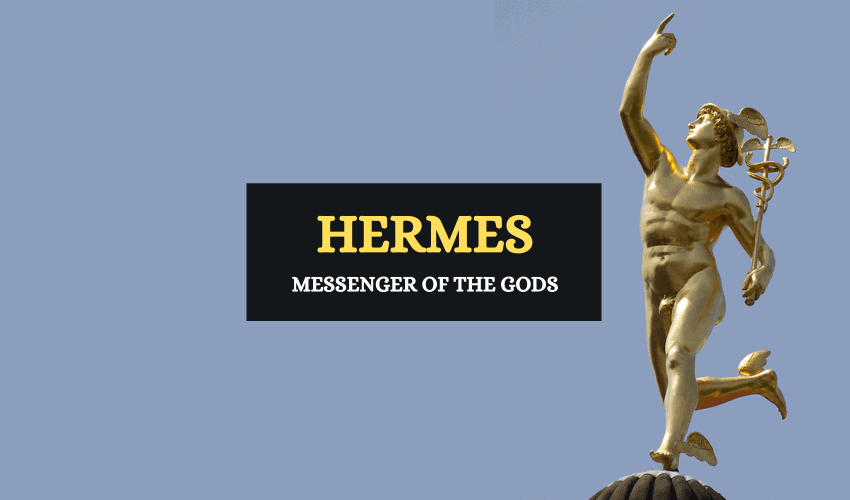
Table of Contents
As one of the twelve Olympian gods, Hermes was an important figure and features in many ancient Greek myths. He played many roles, including being a psychopomp to the dead and the winged herald of the gods. He was also a great trickster and the god of several other domains including commerce, thieves, flocks and roads.
Quick and intelligent, Hermes had the ability to move freely between the divine and mortal worlds and it was this skill that made him perfect for the role of the gods’ messenger. In fact, he was the only Olympian god who could cross the border between the dead and the living, an ability that would come into play in several significant myths.
Who was Hermes?
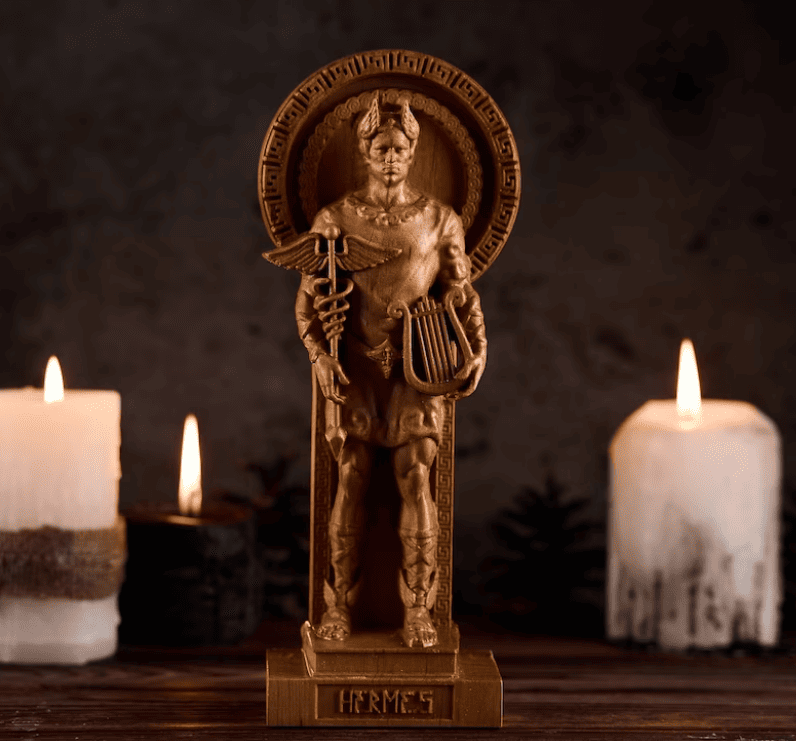
Hermes was the son of Maia, one of the seven daughters of Atlas, and Zeus, the god of the sky. He was born in Arcadia on the famous Mt. Cyllene.
According to some sources, his name is derived from the Greek word ‘herma’ meaning a heap of stones like those that were used in the country as landmarks or to indicate the boundaries of the land.
Although he was a god of fertility, Hermes didn’t marry and had few affairs, compared to most other Greek gods. His consorts include Aphrodite, Merope, Dryope and Peitho. Hermes had several children including Pan, Hermaphroditus (with Aphrodite), Eudoros, Angelia and Evander.
Hermes is often depicted wearing a winged helmet, winged sandals and carrying a wand, known as the caduceus.
What Was Hermes the God Of?
Apart from being a messenger, Hermes was a god in his own right. Hermes was the protector and patron of herdsmen, travellers, orators, literature, poets, sports and trade. He was also the god of athletic contests, heralds, diplomacy, gymnasiums, astrology and astronomy.
In certain myths, he is depicted as a clever trickster who would sometimes outwit the gods for fun or for the benefit of humankind.
Hermes was immortal, powerful and his unique skill was speed. He had the ability to make people fall asleep using his staff. He was also a psychopomp, and as such had the role of escorting the newly dead to their place in the Underworld.
Myths Involving Hermes
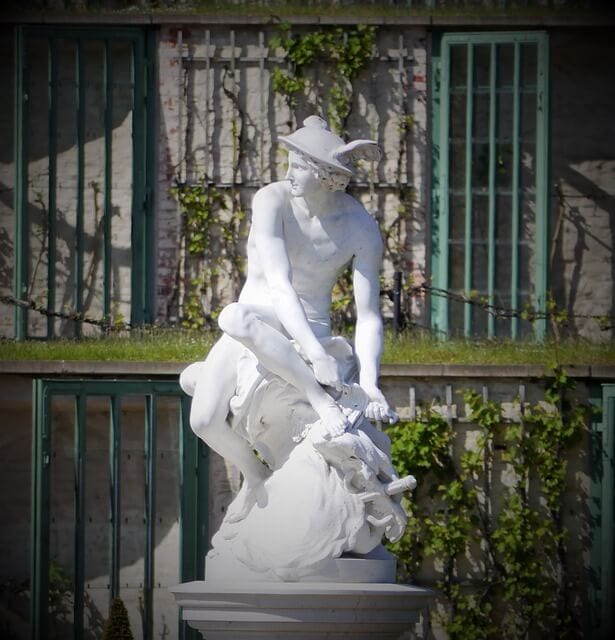
Hermes and the Herd of Cattle
Hermes was an impish god who was always searching for constant amusement. When he was just a baby, he stole a herd of fifty sacred cattle that belonged to his half-brother Apollo. Although he was a baby, he was strong and clever and he covered up the herd’s tracks by attaching bark to their shoes, which made it difficult for anyone to follow them. He hid the herd in a large cave in Arcadia for several days until satyrs discovered it. This is how he came to be associated with thieves.
After a hearing held by Zeus and the rest of the Olympian gods, Hermes was allowed to keep the herd which consisted of only 48 cattle since he’d already killed two of them and used their intestines to make strings for the lyre, a musical instrument he’s credited for having invented.
However, Hermes could only keep the herd if he gifted his lyre to Apollo which he willingly did. Apollo gave him a shining whip in exchange, putting him in charge of the cattle herds.
Hermes and Argos
One of the most celebrated mythical episodes involving Hermes is the killing of the many-eyed giant, Argos Panoptes. The story began with Zeus’ secret affair with Io, the Argive Nymph. Zeus’ wife Hera was quick to appear on the scene but before she could see anything, Zeus transformed Io into a white cow to hide her.
However, Hera knew of her husband’s promiscuity and was not deceived. She demanded the heifer as a gift and Zeus had no option other than to let her have it. Hera then appointed the giant Argos to guard the animal.
Zeus had to free Io so he sent Hermes to rescue her from the clutches of Argos. Hermes played beautiful music which lulled Argos to sleep and as soon as the giant was nodding off, he took his sword and slayed him. As a result, Hermes earned himself the title ‘Argeiphontes’ which means ‘Slayer of Argos’.
Hermes in the Titanomachy
In Greek mythology, the Titanomachy was a great war that took place between the Olympian gods and the Titans, the old generation of the Greek gods. It was a long war that lasted for ten years and ended when the old pantheon that was based on Mt. Othrys was defeated. Afterwards, the new pantheon of gods was established on Mt. Olympus.
Hermes was seen during the war dodging boulders thrown by the Titans, but he doesn’t have a prominent role in this great conflict. He apparently did his best to avoid it whereas Ceryx, one of his sons, fought valiantly and was killed in battle fighting Kratos, the divine personification of power or brute strength.
It’s said that Hermes bore witness to Zeus banishing the Titans to Tartarus for all eternity.
Hermes and the Trojan War
Hermes played a role in the Trojan War as mentioned in the Iliad. In one long passage, Hermes is said to have acted as a guide and counsellor to Priam, the King of Troy as he tried to retrieve the body of his son Hector who was killed at the hands of Achilles. However, Hermes actually supported the Achaeans and not the Trojans during the war.
Hermes as Messenger
As messenger to the gods, Hermes is present in several popular myths.
- Hermes escorts Persephone from the underworld back to Demeter, her mother in the land of the living.
- Hermes escorts Pandora down to earth from Mount Olympus and takes her to her husband, Epimetheus.
- After Orpheus turns back, Hermes is tasked with escorting Eurydice back into the Underworld forever.
Hermes’ Notable Symbols
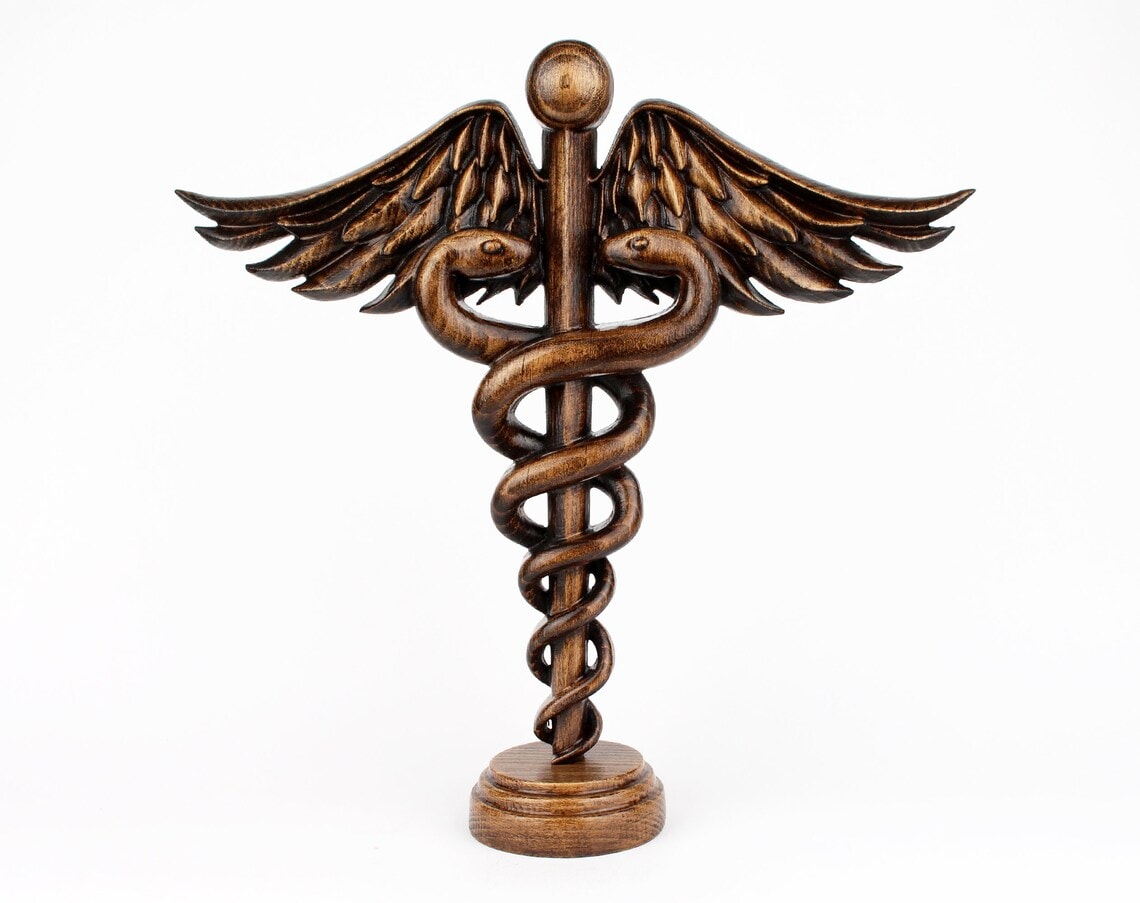
Of all the Greek gods, Hermes has some of the most unique and interesting objects associated with him. Hermes is often depicted with the following symbols:
- The Caduceus: This is the most popular symbol of Hermes, featuring two snakes wound around a winged staff. Because of its similarity to the Rod of Asclepius (the symbol of medicine) the Caduceus is often mistakenly used as a symbol of medicine.
- Talaria, the Winged Sandals: The winged sandals are a popular symbol of Hermes, connecting him to speed and agile movement. The sandals were made of imperishable gold by Hephaestus, the craftsman of the gods, and they allowed Hermes to fly as fast as any bird. The winged sandals feature in the myths of Perseus and helped him in his quest to kill the Gorgon Medusa.
- A Leather Pouch: The leather pouch associates Hermes with commerce. According to some accounts, Hermes used the leather pouch to keep his sandals in.
- Petasos, the Winged Helmet: Such hats were worn by rural people in Ancient Greek as a sun hat. Hermes’ Petasos features wings, associating him with speed but also with the shepherds, roads and travelers.
- Lyre: While the lyre is a common symbol of Apollo, it’s also a symbol of Hermes, because he is said to have invented it. It’s a representation of his skill, intelligence and quickness.
- A Gallic Rooster and a Ram: In Roman mythology, Hermes (Roman equivalent Mercury) is often depicted with a rooster to herald a new day. He’s also portrayed riding on the back of a large ram, symbolizing fertility.
- Phallic Imagery: Hermes was seen as a symbol of fertility and phallic imagery associated with the god were often placed at household entrances, reflecting the ancient belief that he was a symbol of household fertility.
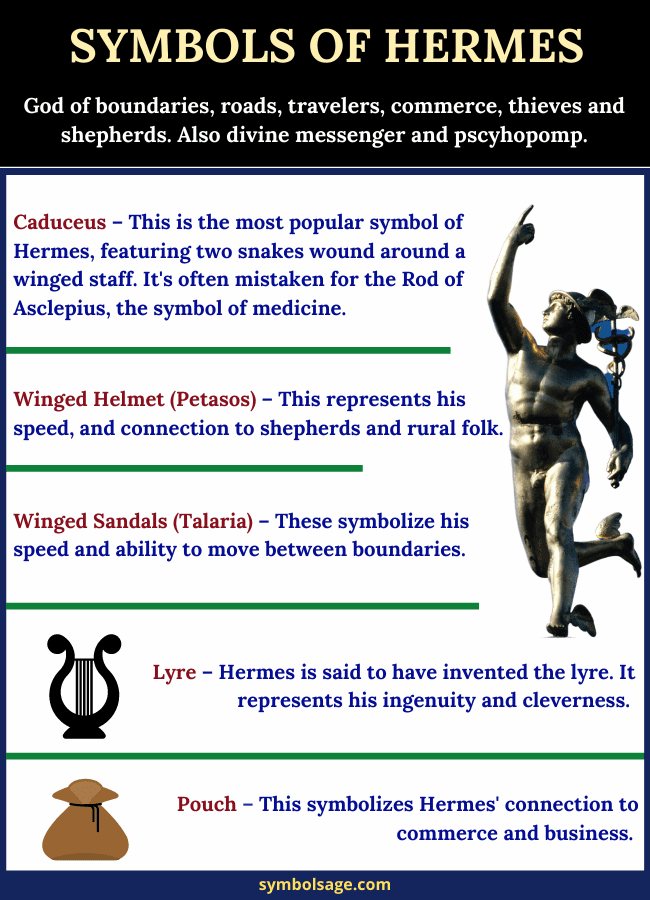
Hermes Cult and Worship
Statues of Hermes were placed at the entrances of stadiums and gymnasiums throughout Greece because of his swiftness and athleticism. He was worshipped in Olympia where the Olympic Games was celebrated and sacrifices made to him included cakes, honey, goats, pigs and lambs.
Hermes has several cults throughout both Greece and Rome, and he was worshipped by many people. Gamblers often prayed to him for good luck and wealth and merchants worshipped him daily for successful business. People believed that Hermes’ blessings would bring them good fortune and prosperity and so they made offerings to him.
One of the oldest and most important places of worship for Hermes was Mt. Cyllene in Arcadia where he was said to have been born. From there, his cult was taken to Athens and from Athens it spread throughout Greece.
There are several statues of Hermes erected in Greece. One of the most famous statues of Hermes is known as the ‘Hermes of Olympia’ or the ‘Hermes of Praxiteles’, found amongst the ruins of a temple dedicated to Hera in Olympia. There is also priceless artwork depicting Hermes on display at the Olympian Archaeological Museum.
Hermes in Roman Tradition
In Roman tradition, Hermes is known and worshipped as Mercury. He is the Roman god of travellers, merchants, transporters of goods, tricksters and thieves. He is sometimes depicted holding a purse, which is symbolic of his usual business functions. A temple built on Aventine Hill, Rome, was dedicated to him in 495 BCE.
Facts About Hermes
Hermes is the offspring of Zeus and Maia.
Hermes is the god of boundaries, roads, commerce, thieves, athletes and shepherds.
Hermes lives on Mount Olympus as one of the Twelve Olympian gods.
Hermes is the herald of the gods and also a psychopomp.
Hermes consorts include Aphrodite, Merope, Dryope and Peitho.
Hermes Roman equivalent is Mercury.
His symbols include caduceus, talaria, lyre, rooster and the winged helmet.
Hermes was known for his swiftness, intelligence and agility.
In Brief
Hermes is one of the best-loved of the Greek gods because of his cleverness, quick-wit, mischievousness and skills he possessed. As one of the twelve Olympian gods, and as the messenger of the gods, Hermes was an important figure and features in several myths.








